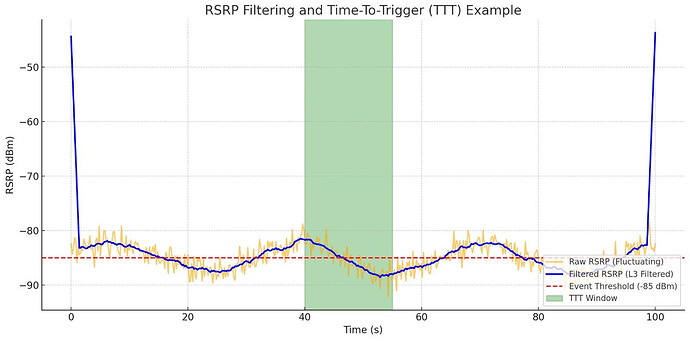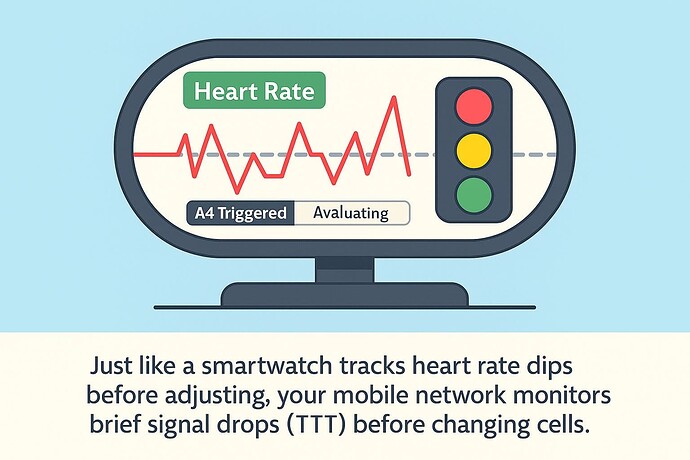As seen in earlier posts, LTE networks use events like A1–A6 to decide when and how to shift users between cells. But there’s more to the story—what if signal strength dips momentarily? Should the device trigger a handover immediately?
That’s where Layer 3 filtering and Time-To-Trigger (TTT) come in. Let’s break it down:
![]() What’s Really Happening?
What’s Really Happening?
![]() Raw RSRP Fluctuates Constantly
Raw RSRP Fluctuates Constantly
Due to fast fading, reflection, or minor user movements, signal readings go up and down all the time.
![]() Filtered RSRP Smooths the Curve
Filtered RSRP Smooths the Curve
The network applies a filter (like a moving average) to reduce short-term noise. Think of it like averaging your heart rate over 10 seconds instead of every beat.
![]() TTT Adds Another Layer of Stability
TTT Adds Another Layer of Stability
Even if the filtered RSRP drops below a threshold, the condition must persist for a specific duration (e.g., 1 second) before triggering a measurement report or handover.
This avoids unnecessary handovers during brief signal dips—especially useful in high-speed or urban environments.
![]() Real-Life Analogy:
Real-Life Analogy:
Imagine you’re using a fitness tracker. Your heart rate spikes when you run up stairs, but that doesn’t mean your smartwatch immediately switches to “Workout Mode.” It waits to see if you’re staying active for a while before reacting.
Similarly, the network waits before triggering events, thanks to TTT and filtering.
![]() Graph: RSRP Filtering & TTT
Graph: RSRP Filtering & TTT
This graph shows:
![]() Raw RSRP (spiky & fluctuating)
Raw RSRP (spiky & fluctuating)
![]() Filtered RSRP (smoother signal)
Filtered RSRP (smoother signal)
![]() Threshold (e.g., -85 dBm)
Threshold (e.g., -85 dBm)
![]() Green Zone = TTT Window: signal must stay below threshold here to trigger
Green Zone = TTT Window: signal must stay below threshold here to trigger
![]() Optimization Tip:
Optimization Tip:
Fine tuning the filter coefficient and TTT duration helps avoid ping-pong handovers, especially in fast-moving scenarios (cars, trains).
LinkedIn: ![]()

